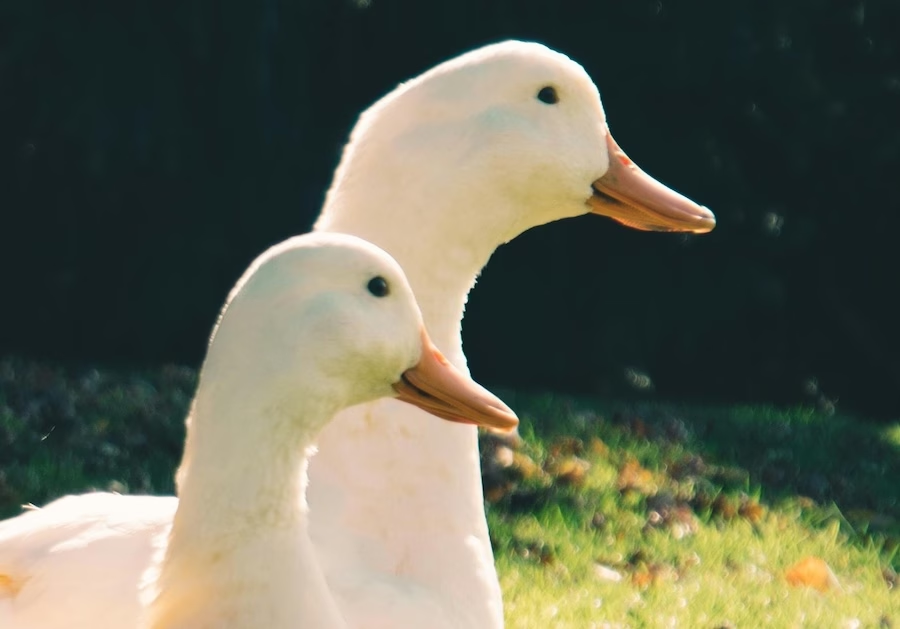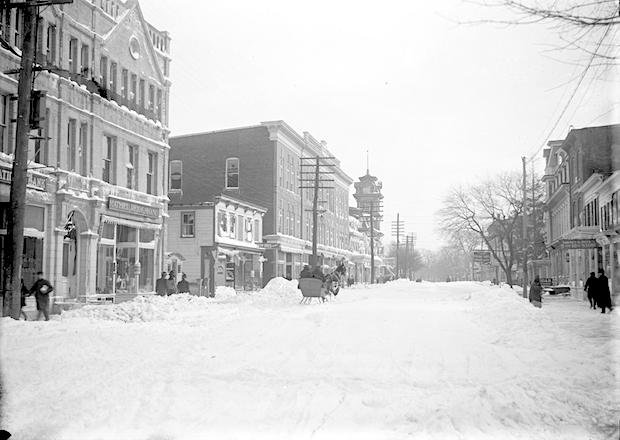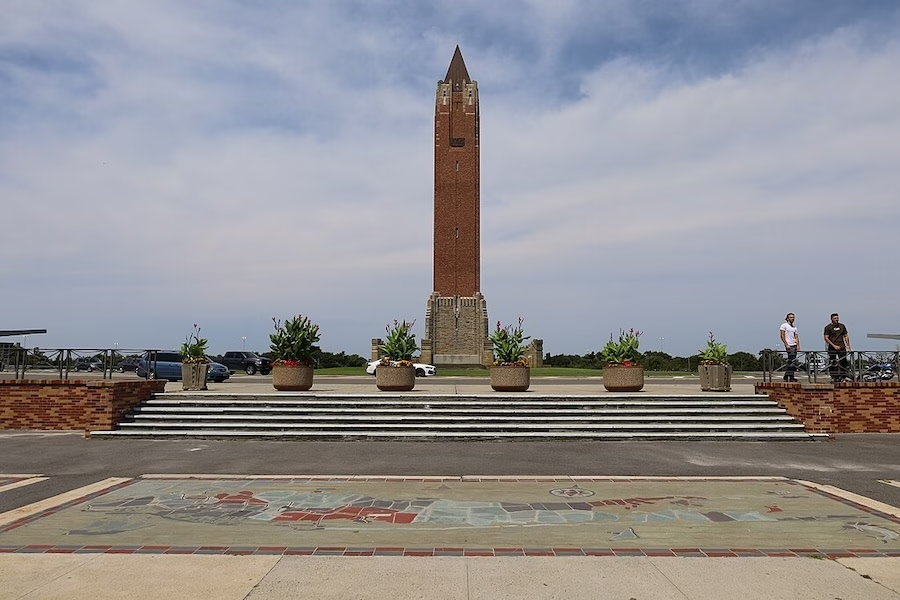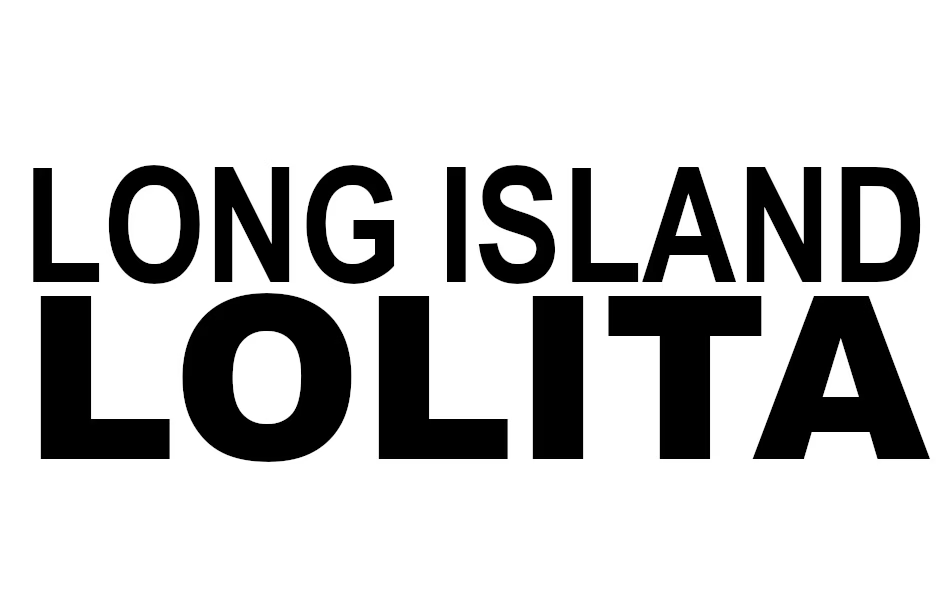By Tyler Rieger
For over a century, Long Island has been known for its duck farms, once producing millions of ducks a year. Today, only one remains—Crescent Duck Farm in Aquebogue. But now, even its future is in jeopardy. The ongoing bird flu outbreak has devastated the agricultural industry, wiping out flocks across the country. Crescent Duck Farm was forced to cull its entire flock of about 100,000 ducks after discovering some were infected. With the country’s largest duck provider in limbo, the fate of Long Island’s last duck farm hangs in the balance.
Not only would its closure be a sorry sight for duck lovers everywhere, but it would also mark the unexpected end of a defining era on Long Island. Once a booming industry, duck farming shaped both the economy and culture of the East End, with dozens of farms producing millions of ducks annually. For now, Crescent Duck Farm stands as the last link to a time when Long Island was the duck capital of America.
The Quack of Dawn: The Beginnings of LI’s Duck Industry
The famous Pekin duck first arrived on Long Island in the late 19th century, completely transforming the local poultry scene. These fast-growing, juicy, and tender birds helped small-scale duck farming explode into a thriving industry practically overnight.
Legend has it that in 1872, Ed McGrath traveled to Pekin, China, and was stunned by the sheer size of the ducks there. Determined to bring them back to the U.S., he purchased a batch of duck eggs.
- McGrath incubated and hatched fifteen ducks in Shanghai.
- He teamed up with poultry expert James E. Palmer to transport the ducks across the ocean.
- A storm at sea resulted in the loss of six ducks.
- The remaining nine (three drakes and six ducks) arrived in New York City on March 13, 1873.
The Perfect Place for Ducks to Thrive
Long Island turned out to be the perfect home for the Pekin duck. Its geography, climate, and proximity to New York City gave local farmers a major advantage in breeding, raising, and selling ducks.
- Extensive shorelines and natural freshwater sources made an ideal environment for ducks.
- The moderate climate was well-suited to raising Pekin ducks year-round.
- An abundance of high-quality grain in the region provided excellent duck feed.
- Most farms popped up along local ponds and streams, giving farmers easy access to fresh water.
- The short trip to New York City meant a steady stream of restaurants and markets eager to buy Long Island ducks.
Duck Farms Take Flight
With the introduction of the Pekin duck, Long Island’s poultry farming took off. By the early 20th century, the island had become a powerhouse in duck production, with farms multiplying across Suffolk County.
- By 1900, approximately 30 duck farms were operating in Moriches, Eastport, and Riverhead.
- The Atlantic Duck Farm, owned by the Hallock family, became the largest duck farm in the world from 1916 to 1938, producing 260,000 ducks per year.
- In 1938, Hollis Warner of Riverhead took the title of the world’s largest duck producer, raising as many as half a million ducks annually.
The Birth of the Big Duck
One of Long Island’s most iconic landmarks hatched from this booming industry—The Big Duck. Built in 1931 by Riverhead duck farmer Martin Maurer, this oversized roadside attraction remains a beloved symbol of Long Island culture.
- Maurer constructed The Big Duck to advertise his duck farm.
- Made from concrete, wire mesh, and wood, the massive duck is 20 feet tall, 30 feet long, and 15 feet wide, weighing in at 30 tons.
- Despite its impressive size, The Big Duck has been relocated twice.
- Since 1988, it has served as a gift shop at the entrance of Sears Bellows County Park in Flanders.
Duck Farming Goes Swimmingly in the 20th Century
By the mid-1900s, Long Island’s duck farming industry was thriving. The 1940s, 50s, and 60s were peak years, with farms scattered across the East End and duck production reaching staggering levels.
- Eastport and Riverhead had the highest concentration of duck farms.
- By the late 1940s and early 1950s, around 70 farms in Suffolk County produced roughly two-thirds of all ducks eaten in the U.S.
- At its peak in the early 1960s, Long Island’s duck industry was as valuable as the state’s entire commercial fishing industry.
- Production hit an all-time high of 7.5 million ducks per year in the early 60s.
Quacks in the Armor: The Fall of Long Island’s Duck Empire
Even as Long Island’s duck industry hit its peak, storm clouds were gathering on the horizon. By the 1960s, new environmental regulations and suburban expansion made it increasingly difficult for farms to stay in business. The number of farms began to dwindle as the challenges mounted.
- By 1963, only 48 farms remained on Long Island.
- Residents in newly built suburban developments pushed back against the strong odors and waste produced by duck farms.
- Stricter pollution control measures increased costs, putting pressure on smaller farms.
- Farmers struggled with rising property taxes and utility costs, cutting into profits.
- With local farmland disappearing to suburban sprawl, regional grain production declined, forcing farms to import expensive Midwest grain.
- Many farmers ultimately found it more profitable to sell their waterfront properties for residential development rather than continue duck farming.
Where Things Stand Now
For over a century, Crescent Duck Farm has been a cornerstone of Long Island’s rich duck farming heritage. Established in 1908, this family-run farm has weathered numerous challenges, from economic downturns to environmental regulations. However, the recent avian influenza outbreak has forced the farm to cull nearly 100,000 ducks, casting uncertainty over its future. According to RiverheadLOCAL, thousands of eggs that were incubating prior to the outbreak are expected to hatch in the coming days, offering a glimmer of hope for rebuilding the flock. As these eggs begin to hatch, the fate of Long Island’s last duck farm will come into sharper focus, determining whether this historic industry can rise anew or face its final chapter.
Tyler Rieger is a reporter with the SBU Media Group, part of Stony Brook University’s School of Communication and Journalism’s Working News program for students and local media.




